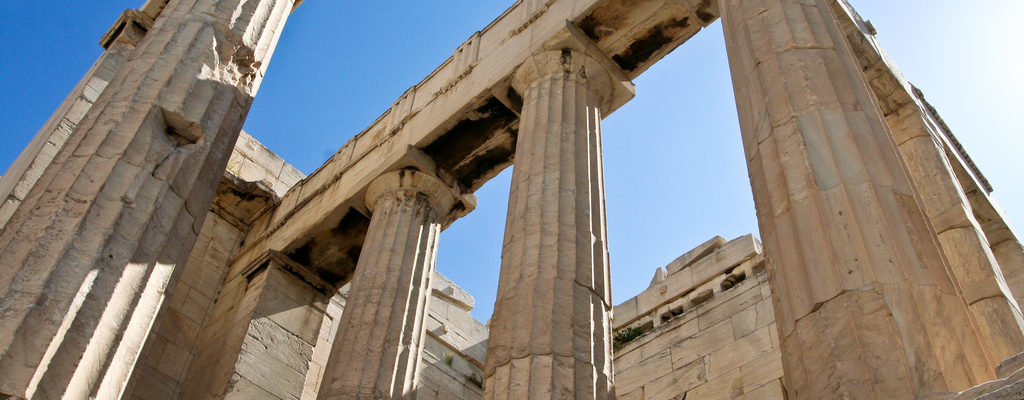The Propylaea were the monumental gateway to the Acropolis of Athens.
Their construction began in 435 BC under the supervision of the architect Mnesicles. This is a monument in Pentelic marble dedicated to the goddess Athena, consisting of a central body with six Doric columns on the facade and two colonnaded wings, one of which was known as the “picture gallery” as it contained several pictures (pinakes).
A further transformation of the entrance to the Acropolis was undertaken in the Ist century AD, in the reign of the emperor Claudius, when the ramp up which the Panathenaic Procession ascended the Acropolis was substituted with a broad stairway.
Entering the facade, visitors went through the Propylaia, proceeding on a ramp flanked by columns, with five portals and ceilings of marble coffering, to the sides of which were monuments donated to the sanctuary by important figures.
In the south-west corner of the Acropolis stands the Temple of Athena Nike, a building with four Ionic columns across the front and the same number behind, in which was kept the wooden statue of the cult, representing the goddess with a pomegranate in her right hand and a helmet in her left one.
The temple was also known as the “Temple of Nike Apteros” (“unwinged victory”), due to the fact that the statue’s wings of gold had been stolen. The building, which is the work of the architect Kallikrates, was built between the mid Vth century and 421 BC.
We know that the pediment was decorated with bronze acroteria (statues placed on top of the pediment) depicting Bellerophon (the mythical hero who killed the Chimaera) and flying Victories, and that the sculptures represented scenes of Gigantomachia (battle against Giants) and Amazonomachia (battle against Amazons).
On the continuous Ionic frieze were sculpted scenes of battle and a series of standing deities, in the centre of which are Zeus and Poseidon, together with Athena.
The temple has been the object of several reconstructions over the last two centuries, the last of which was in very recent times.
In front of the temple is the altar upon which sacrifices in honour of the goddess were celebrated. One of these ceremonies is depicted on the relief of the balustrade marking the boundary of the precinct: the killing of a heifer.

Do you want to know more about the Acropolis and the history of Athens?
Check out our guidebook to Athens, with detailed history and Past & Present images of the Acropolis, the Parthenon, the Propylaea and all the greatest historical and archaeological sites of the greek city.

